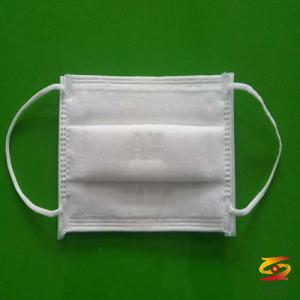What is the working principle of the twin screw extruder
What is the working principle of the twin screw extruderWorking principle diagram of twin screw extruder
One. Basic structure and working principle
The commonly known screw refers to a twin-screw extruder.
The basic structure of screw compressor:
A pair of intermeshing spiral rotors are arranged in parallel. Compressor body.
Called the male rotor or male screw. A rotor with concave teeth inside the pitch circle, usually a rotor with convex teeth outside the pitch circle. This is called a female rotor or female rotor.
The male rotor drives the female rotor to rotate. Generally, the male rotor is connected to the prime mover.
And bear the axial force in the compressor. Cylindrical roller bearings at both ends of the rotor enable radial positioning of the rotor, and the last pair of bearings on the rotor achieve axial positioning. And bear the radial force in the compressor.
Open holes of a certain shape and size respectively. One for suction, both ends of the compressor body. It is called the air inlet; the other is for exhaust, called the air outlet.
working principle:
Three processes of compression and exhaust. As the rotor rotates, the working cycle of the screw compressor can be divided into intake air. Each pair of intermeshing teeth completes the same working cycle in succession.
When the space of the tooth groove of the yin and yang rotor is turned to the opening of the intake end wall, 1. Intake process: when the rotor rotates. The space is the largest. At this time, the space between the rotor groove and the air inlet is connected. Because the gas in the tooth groove is completely discharged during exhaust, the groove is in a vacuum state when the exhaust is completed. When it is transferred to the air inlet, the outside world The gas is sucked in and enters the tooth groove of the Yin-Yang rotor in the axial direction. When the gas fills the entire tooth groove, the end face of the rotor intake side turns away from the air inlet of the casing, and the gas in the tooth groove is closed.
The yin and yang rotor tooth tips will be closed with the casing, 2. Compression process: Yin-Yang rotor at the end of inhalation. At this time, gas no longer flows out inside the tooth groove. Its engaging surface gradually moves toward the exhaust end. The space of the tooth groove between the engagement surface and the exhaust port gradually becomes smaller, and the gas in the tooth groove is compressed by the compression pressure.
The compressed gas begins to be discharged, 3. Exhaust process: When the engaging end face of the rotor turns to communicate with the exhaust port of the casing. Until the meshing surface of the tooth tip and the tooth groove moves to the exhaust end surface, the exhaust surface process is completed when the meshing surface of the male and female rotors and the tooth groove of the casing exhaust port is 0, and at the same time, the meshing surface of the rotor and the casing enter The length of the tooth groove between the air ports reaches the longest, and the air intake process is repeated.
The screw compressor is a volumetric gas compression machine with a working volume for rotary motion. The compression of gas depends on the change in volume, as can be seen from the above working principle. The change in volume is achieved by a pair of rotors of the compressor rotating in the casing
Characteristics of screw compressor:
Screw compressors are the same as piston compressors in terms of the principle of increased gas pressure. All are positive displacement compressors. In terms of the movement form of the main components, it is similar to the centrifugal compressor. Therefore, the screw compressor has the characteristics of the above two types of compressors.
Advantages of screw compressor:
No wearing parts, 1. High reliability: few screw compressor parts. Therefore, it operates reliably and has a long service life. The interval between overhauls can reach 40,000 to 80,000 hours.
Can achieve unattended operation. 2 . Easy operation and maintenance: the operator does not have to go through professional training.
The machine can work smoothly and at high speed, 3. Good dynamic balance: screw compressor has no unbalanced inertial force. It can be operated without foundation.
Exhaust volume is almost not affected by exhaust pressure, 4. Strong adaptability: The screw compressor has the characteristics of forced gas transmission. High efficiency can be guaranteed in a wide range.
Therefore, it is resistant to liquid impact, 5. Multiphase mixed transmission: the rotor tooth surface of the screw compressor actually has a gap. It can send liquid containing gas, dust containing gas, easily polymerizable gas, etc.
Disadvantages of screw compressors:
Need to use special tools, 1. High cost: the rotor tooth surface of the screw compressor is a spatial curved surface. It is processed on expensive special equipment. In addition, the machining accuracy of the screw compressor cylinder also has high requirements.
Screw compressor can only be applied to medium, 2. Not suitable for high-pressure occasions: due to limitations in rotor stiffness and bearing life. Low pressure range, exhaust pressure generally cannot exceed 3.0Mpa
At present, only screw compressors with volume flow greater than 0.2m3/min have superior performance. 3. Can not be made miniature: screw compressors rely on gaps to seal gas.
If you want to know more about it please do not hesitate to
contact me. WhatsApp:+86-15966835076.








